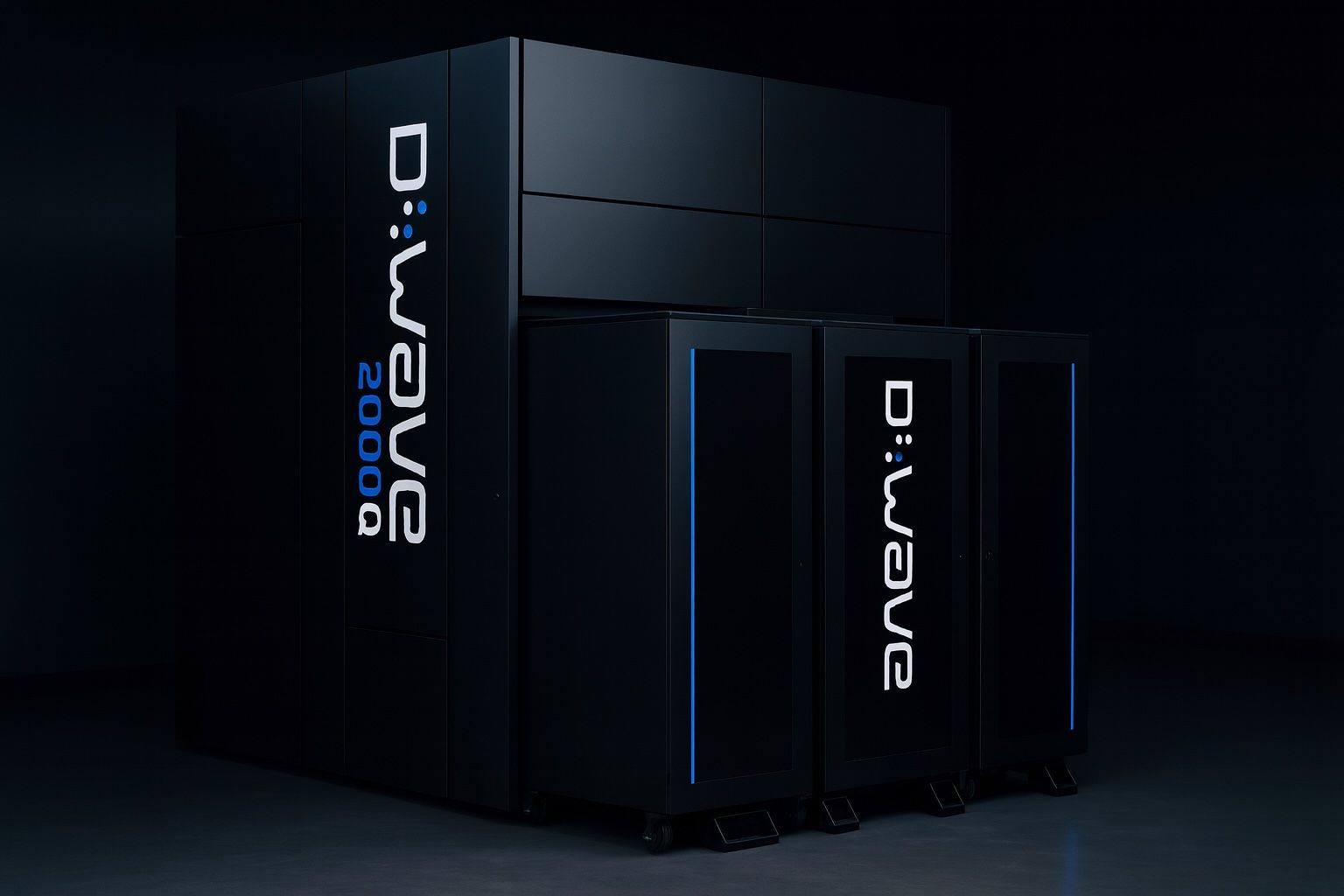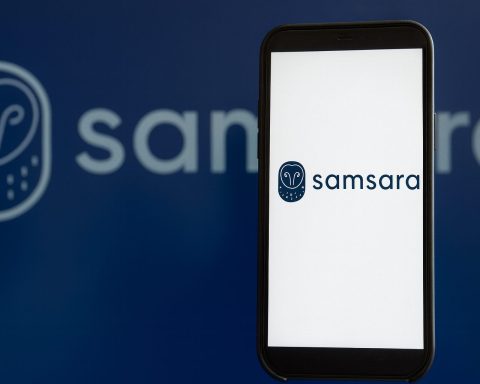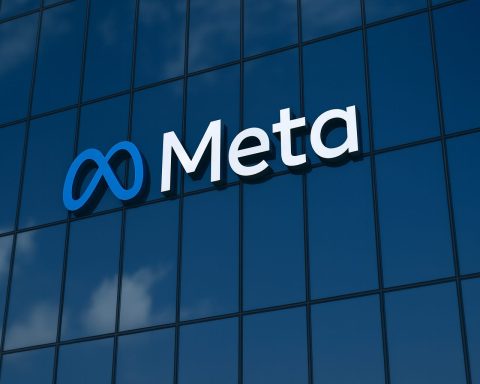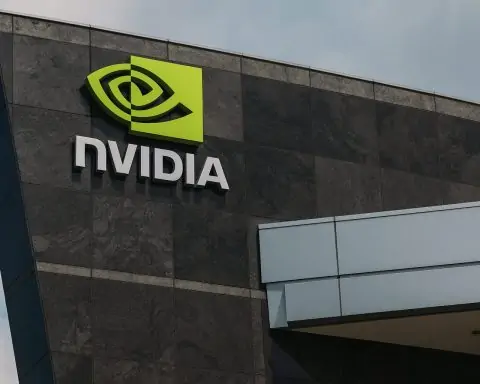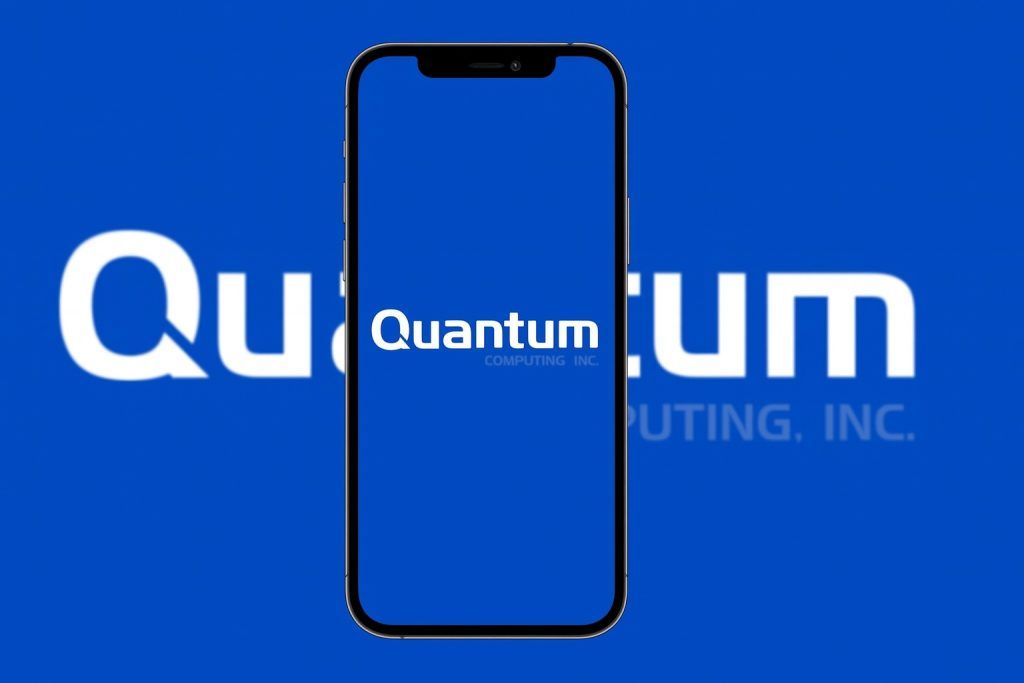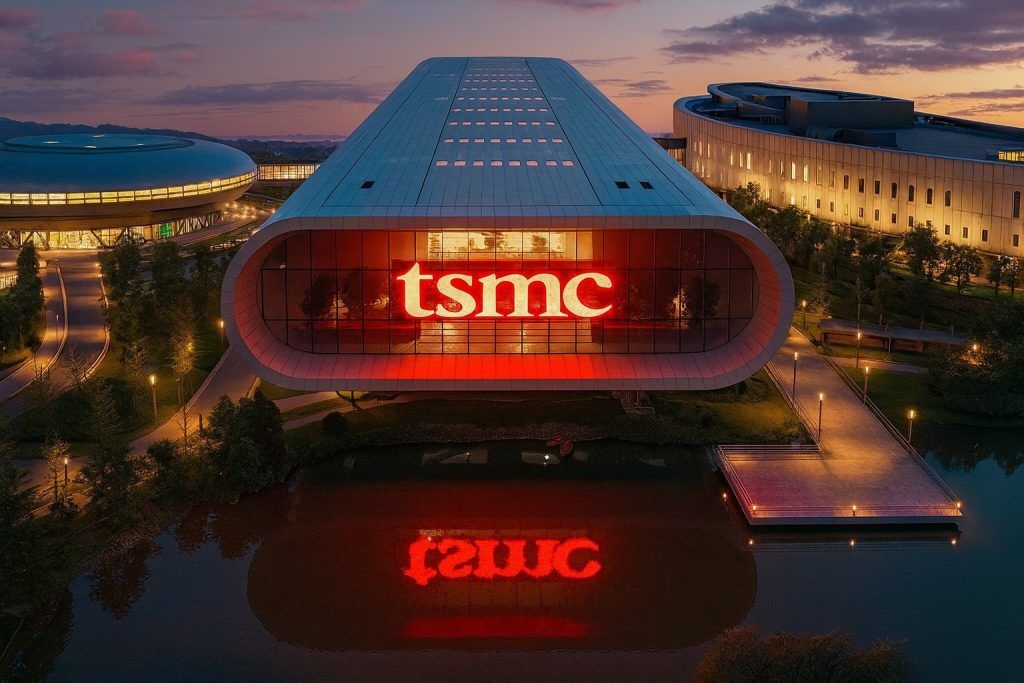- Record Stock Surge: D-Wave Quantum Inc. (NYSE: QBTS) shares hit all-time highs in early October 2025, peaking around $33 intraday on Oct 3 and closing at $32.70 (up ~12% that day) [1]. The stock has climbed roughly +289% year-to-date and an astonishing +3,000%+ over the past 12 months, reflecting a parabolic rise amid quantum computing hype [2] [3]. Trading volume spiked (77 million shares on Oct 3) and technical analysts noted the rally pushed momentum indicators into overbought territory [4]. Some even projected that if current momentum holds, QBTS could reach the $40+ range in the near term [5].
- Real-World Quantum Breakthrough: Investor excitement is fueled by tangible use-case wins. In a proof-of-technology pilot with North Wales Police (UK), D-Wave’s hybrid quantum application optimized police vehicle deployment, cutting solution time from 4 months to 4 minutes and slashing average emergency response times by ~50% [6]. D-Wave’s CEO Alan Baratz highlighted this as evidence that “hybrid-quantum computing can offer the speed, precision and intelligence needed to identify optimal officer placements…[and] is beginning to show real-world potential” [7]. This concrete result – a faster, more efficient outcome than classical methods alone – has bolstered the real-world credibility of quantum computing [8] [9].
- Quantum Computing Sector Rally: D-Wave’s surge comes amid a broader quantum computing stock frenzy. In the same week, peer Rigetti Computing (RGTI) jumped 18% in a day, and IonQ (IONQ) rose about 10% [10]. Even smaller player Quantum Computing Inc. (QUBT) saw gains. The trigger was Rigetti’s announcement of a $5.7 million order for two of its 9-qubit “Novera” quantum systems (to be delivered in early 2026) [11] [12] – a sign that paying customers are emerging for quantum hardware. Simultaneously, D-Wave’s police project news and upbeat comments from industry leaders (like NVIDIA executives praising quantum advancements) further fanned optimism [13]. All told, quantum computing firms – once penny stocks – have leapt by triple or even quadruple digits percentage-wise in the past year, in what some are calling a “quantum gold rush.”
- Financial Position and Growth: Despite minimal current revenues, D-Wave’s business metrics are improving. In Q2 2025 it reported revenue of $3.1 million (up 42% year-over-year) [14], and first-half 2025 revenue reached $18.1 million (up 289% YoY) [15] – reflecting early customer deals including quantum system sales. Gross profit grew similarly, though heavy R&D and one-time warrant expenses drove a large net loss (~$0.55 per share GAAP). Crucially, D-Wave has amassed a record $819 million cash reserve [16] after a $400M at-the-market equity raise, giving it a war chest to fund development. The company’s market capitalization now hovers around $10–11 billion [17]. For full-year 2025, analysts forecast ~$25M revenue [18] – tiny relative to the valuation, but reflecting rapid growth as D-Wave begins converting decades of R&D into commercial sales.
- Analyst Sentiment and Forecasts:Wall Street analysts are largely bullish on QBTS, but with some caution. As of early October, 11 analysts rate D-Wave a “Buy” (vs just 1 Hold), and the average 12-month price target is around $20–$23 per share [19]. Notably, several firms recently raised their targets into the high-$20s or low-$30s – for example, B. Riley, Piper Sandler, and Needham all reiterated optimistic outlooks, citing quantum’s accelerating march toward commercial viability [20]. However, with the stock now trading above many of these targets, a few experts urge caution. MarketBeat notes the consensus target (~$20) is well below the current price – implying expectations may have gotten ahead of reality [21]. Valuation concerns are growing, and Zacks Investment currently rates QBTS a Hold, highlighting that the company remains unprofitable [22]. In media commentary, even bullish observers acknowledge the quantum computing sector is “highly speculative” at this stage – prone to volatility and potential pullbacks [23].
- Competition and Tech Landscape: D-Wave operates in a small field of pure-play quantum computing firms, each using different technologies. D-Wave’s niche is quantum annealing – solving optimization problems – and it touts itself as the first to commercialize quantum computers (with customers running over 200 million problems on its systems to date) [24]. Rival IonQ, by contrast, focuses on gate-based trapped-ion quantum processors aimed at long-term error-corrected computing. IonQ’s stock has also skyrocketed (recently hitting ~$75, up 700% YoY) and its market cap now tops $20 billion, roughly double D-Wave’s [25] [26]. Rigetti uses superconducting gate-model qubits (more akin to Google/IBM’s approach) and, like D-Wave, was a penny stock a year ago but now commands a ~$10+ billion valuation after a 2,500%+ run-up [27] [28]. All three companies are unprofitable and in nascent revenue stages (Q2 2025 revenues: IonQ $20.7M, D-Wave $3.1M, Rigetti $1.8M [29]), yet each is hitting technical milestones. D-Wave’s new Advantage2 annealer, launched mid-2025, offers faster, higher-coherence computing with over 5,000 qubits and has shown up to 400× speedups on certain routing problems vs. its prior model [30]. IonQ, meanwhile, is pursuing error-corrected qubits and announced plans to achieve 80,000 logical qubits by 2030 (boosted by its $1 billion+ acquisition of Oxford Ionics) [31] [32]. Rigetti recently demonstrated a multi-chip processor with improved fidelity and secured new system orders [33] [34]. Major tech players (IBM, Google, Microsoft, Amazon) are also investing heavily in quantum R&D, but D-Wave and peers aim to carve out leadership as agile specialists bringing quantum solutions to market now.
- Quantum Computing Outlook: Investors are betting that these early achievements are harbingers of a coming quantum era. Consulting firm McKinsey projects the quantum computing market could grow from ~$4 billion in 2024 to $72 billion by 2035, as the technology matures [35]. D-Wave is positioning to capitalize: it’s pursuing an aggressive roadmap toward 100,000-qubit systems by decade’s end [36], has forged partnerships and MOUs globally (e.g. installing an Advantage2 system in South Korea with Yonsei University) [37], and is engaging industry players in projects spanning logistics, manufacturing, defense, and finance. For example, D-Wave and Ford Otosan recently used quantum optimization to cut vehicle production scheduling time by 85% (from 30 minutes to <5) [38]. Such cases hint at the practical benefits quantum computing might unlock across sectors. Still, realizing this potential will require sustained technical progress and trust from early adopters, all while the companies must manage cash burn and competition. The next few quarters – including D-Wave’s anticipated Q3 results and any new customer wins – will be closely watched as indicators of whether this quantum leap for investors can maintain its momentum, or if gravity (in the form of fundamentals) will eventually bring valuations back to earth.
D-Wave’s Meteoric Rise in Early October 2025
D-Wave Quantum’s stock chart in the first week of October 2025 looked like something out of a sci-fi blockbuster – shooting upward to record levels. On Friday, October 3, shares hit an intraday high of $33.28 before closing at $32.70 [39]. Just two days earlier, on Oct 1, QBTS had been trading in the mid-$20s; by Oct 3 it was up roughly 30% for the week and nearly +300% year-to-date [40]. To put the trajectory in perspective, one year ago the stock was barely $1 – it has since multiplied over 30-fold [41]. This kind of explosive growth is virtually unheard of outside of penny-stock or cryptocurrency realms, and it underscores both the euphoria around quantum computing and the speculative nature of the rally.
What drove this sudden surge? In large part, a cascade of positive news and market buzz hit all at once:
- Real-world validation: In late September, D-Wave and the North Wales Police announced startling results from a pilot program. Using D-Wave’s hybrid quantum-classical computing service, the police force was able to optimize where to station patrol vehicles such that they dramatically improved response times. According to the announcement, the quantum-powered solution reduced a complex police dispatch planning problem “from four months to four minutes” and enabled a nearly 50% reduction in average incident response time [42]. In other words, something that took months of number-crunching by classical methods was achieved in minutes by D-Wave’s quantum approach – a striking proof of effectiveness in a public safety scenario. This news, released on Sept 30, showcased practical, real-world impact from quantum computing, countering the skeptics who say the tech is years away from usefulness.
- Media fanfare: The police pilot story garnered media coverage highlighting the “real-world significance” of D-Wave’s technology [43]. When investors read headlines about quantum computers literally cutting emergency response times in half, it added fuel to the already burning interest in the sector. Positive remarks from industry figures further amplified the buzz – for instance, NVIDIA’s leadership gave nods to recent quantum advances, which some traders took as an encouraging sign for quantum computing’s future [44]. All of this created a sense that “quantum’s moment” has arrived.
- Sympathy wave from peers: At the same time, other quantum computing stocks were spiking, often for their own idiosyncratic news (detailed more below). Notably, on Oct 2 Rigetti Computing announced a multi-million-dollar sale of two small quantum machines, which sent its stock soaring over 18% in one day [45]. IonQ, the largest company in the space, also saw its shares jump ~10% that day [46]. This sector-wide jump suggests a lot of momentum traders and quantum believers were piling into all names at once. D-Wave, being one of the few pure-plays in quantum and now flush with a tangible success story, became a prime beneficiary of this enthusiasm.
By the week’s end, D-Wave’s stock had essentially gone vertical. Analysts noted the move was accompanied by extremely high trading volume and technical breakouts above previous resistance levels [47]. In fact, chart watchers pointed out there might be no clear resistance until the mid-$30s, given the stock’s lack of trading history at these heights [48]. The exuberance even led some to speculate on even higher short-term targets – an Investopedia analysis posited ~$41 as an upper bound if the rally continued unabated [49].
However, the dizzying ascent also raises a natural question: is this run sustainable? With shares having climbed so far, so fast, many experts cautioned that volatility is likely to remain high. As we’ll discuss, while D-Wave’s progress is real, its valuation has gone into what some might call “bubble territory” relative to current fundamentals. For now, though, early October saw D-Wave basking in the market’s limelight as one of the hottest stocks not just in tech, but across all industries.
Real-World Breakthroughs Fueling the Hype
What makes D-Wave’s 2025 rally especially intriguing is the narrative underpinning it: that quantum computing is graduating from the lab into the real world. The North Wales Police pilot has become a centerpiece of that narrative, and for good reason – it provided a concrete example of quantum technology solving a tough, practical problem faster and better than a classical approach.
In the police project, D-Wave’s system tackled the challenge of “forward deployment”: figuring out optimal locations to station police vehicles during a shift, so that officers can respond to emergencies as quickly as possible across a wide region [50]. Traditionally, NWP (North Wales Police) had used classical algorithms and human planning for this, a process that could take months of analysis given the many variables (geography, crime patterns, shifts, etc.) [51]. By using D-Wave’s cloud-based Quantum Hybrid Solver, the police force was able to crunch this optimization in mere minutes, and dynamically adjust plans much more frequently. The outcome was significant – the average incident response time dropped nearly in half in their trial area [52]. As NWP’s analytics lead Alistair Hughes put it, even small reductions in response time can “reduce crime, reduce offense escalation and increase public confidence”, so a 50% improvement could be transformative if scaled up nationally [53].
For D-Wave, this was a validation on multiple levels. It showcased that their annealing-based quantum technology (often criticized as being useful for only niche problems) can in fact yield measurable benefits in a critical, real-world application. It also highlighted the advantage of D-Wave’s strategy of offering hybrid solutions – combining quantum and classical computing – to tackle problems. Rather than needing a fully error-corrected quantum computer (which might be a decade away), D-Wave leveraged its currently available quantum annealer, assisted by classical computing, to get a better result today. This aligns with D-Wave’s philosophy of “quantum practicality now,” in contrast to others focusing purely on future fault-tolerant systems.
The police pilot news not only boosted investor sentiment but also serves as a proof point to attract more customers. Other organizations with complex optimization needs (from emergency services to logistics companies) likely took notice of NWP’s success. In fact, D-Wave has cited over 100 organizations using its quantum cloud platform [54], and the company has been actively converting pilot projects into production engagements. For example, around the same time as the NWP project, D-Wave worked with Ford Otosan (a European JV of Ford) on vehicle manufacturing optimization – reportedly reducing a production scheduling process from 30 minutes to under 5 minutes (an 85% decrease) [55]. D-Wave has also collaborated on route optimization with shipping and transit firms, scheduling with multinational manufacturers, and even vaccine development logistics [56] [57]. Each of these case studies builds the narrative that quantum computing is beginning to deliver value in the field.
This real-world traction addresses a key skepticism that has long hung over quantum computing startups: that quantum breakthroughs in theory or in the lab might not translate to practical utility for many years. D-Wave’s CEO Alan Baratz has been vocal in pushing back on the notion that usable quantum computing is always “decades away” – and pilots like the NWP project bolster his case [58] [59]. In the press release, Baratz emphasized how hybrid quantum solutions can enhance public safety and other domain outcomes today, not just in the distant future [60].
Of course, one must note that these are still early-stage deployments – essentially pilot projects or limited-scope implementations, often supported by research grants or innovation funds (the NWP trial was backed by a UK government grant) [61]. Scaling these up broadly (e.g., to all police departments or all factories) will take time, further validation, and cost reductions. Nonetheless, to the market, they demonstrate a credible path toward commercial adoption of quantum computing. In the hype cycle of emerging tech, tangible wins like this can significantly extend the optimism phase, as they mitigate fears that quantum is all vaporware.
In summary, D-Wave’s recent breakthroughs – especially the dramatic police response time reduction – provided a “eureka” moment for investors. It signaled that quantum computing’s value proposition isn’t just theoretical or confined to esoteric problems; it can meaningfully impact real-world operations. This narrative of quantum coming of age played a central role in supercharging D-Wave’s stock rally and stands as a key theme for the company going forward.
Financial Performance: Small Numbers, Big Growth
Amid the excitement, it’s important to examine D-Wave’s financials, which tell a story of a company still in early commercial stages but growing rapidly.
Revenue and Growth: D-Wave remains a tiny company in revenue terms – for Q2 2025 (the quarter ending June 30), it reported only $3.1 million in revenue [62]. This is basically the size of a small tech startup’s quarterly sales, and it highlights that quantum computing is in its infancy commercially. However, that $3.1M was up +42% from the year-ago quarter [63], and it contributed to first-half 2025 revenues of $18.1 million – which remarkably was +289% higher than the first half of 2024 [64]. Such growth sounds astronomical, but note that in 2024 D-Wave’s revenue base was extremely low (just ~$4.6M in H1 2024) [65]. The surge in the first half of 2025 likely came from a couple of significant one-time deals, such as the delivery of a physical quantum system. D-Wave’s business model includes both cloud service revenues (users pay to access its quantum computers over the cloud) and outright sales of quantum systems for on-premise use. In Q1 2025, for instance, D-Wave recognized about $15M revenue – a huge jump attributed to at least one large system sale or installation [66]. Such lumpy revenues may continue, but the overall trend is that top-line is growing quickly off a low base as more customers experiment with quantum solutions.
Earnings and Profitability: As with virtually all quantum tech companies, D-Wave is operating at a net loss. The Q2 2025 net loss was around $167 million (GAAP) [67], which is enormous relative to revenue. However, the majority of that was due to non-cash charges (specifically, revaluation of warrant liabilities) – an accounting quirk common to companies that went public via SPAC. Stripping out those unusual items, D-Wave’s adjusted loss was about $0.08 per share for the quarter [68], which is a more modest few tens of millions in actual operating loss. The company is heavily investing in R&D (quantum hardware is expensive to develop!) and in building out its software, cloud infrastructure, and developer ecosystem. These expenses currently far outstrip its revenue, so significant losses are expected for the foreseeable future. This is a point not lost on analysts – while they’re bullish on growth, they also note that quantum firms will likely need to prove they can eventually narrow losses or reach breakeven as the industry matures [69].
Cash and Runway: On the bright side, D-Wave is unusually well-capitalized at the moment. Thanks to a massive $400 million ATM (at-the-market) stock offering completed in Q2, the company’s cash reserves swelled to $819 million by mid-2025 [70]. This is a record cash balance for D-Wave and indeed one of the largest war chests among quantum startups. To put it in perspective, $819M could fund D-Wave’s current level of operating losses for several years, if needed. This cash hoard is a strategic asset: management has indicated it will be used for things like strategic acquisitions, accelerated R&D, and general corporate purposes [71]. In essence, D-Wave has bought itself time and flexibility – it can invest aggressively in improving its technology and scaling its business without worrying about running out of money in the near term. (By contrast, some peers like Rigetti were, until their stock spikes, relatively cash-constrained and at risk of needing funding.) The raise did dilute existing shareholders (increasing share count significantly), but given the subsequent stock surge, those new investors have seen gains too.
Market Cap and Valuation: With the stock price in the $30+ range, D-Wave’s market capitalization now stands around $10–11 billion [72] (depending on the exact share count after the financing). This valuation is extraordinary relative to current revenues – a classic case of investors pricing in future potential rather than present performance. For example, if D-Wave hits the ~$25M revenue expected in 2025 [73], the stock would be trading at about 400 times this year’s sales. Even looking ahead, if one believes D-Wave could, say, quadruple revenue annually for a few years, it might do ~$100M in 2026 and a few hundred million by 2028, still putting the current valuation at dozens of times those forward sales. In other words, the stock’s value is based on the belief that D-Wave will be a major winner in the multi-billion-dollar quantum market of the future, not on any near-term financial metrics. This kind of valuation isn’t unprecedented in early-stage tech (witness electric vehicle startups or biotech firms that soared on long-term promise), but it does underscore why some analysts urge caution – there is little room for error or delays if the company is to “grow into” this valuation.
In summary, D-Wave’s financial picture is that of a company in transition: transitioning from pure research into a commercial entity. Revenues are small but rapidly growing, expenses are high as they invest in capturing a leadership position, and thanks to a big cash infusion, they have the resources to keep pushing forward. The stock market’s current love affair with D-Wave suggests investors are willing to look past today’s losses and tiny sales, betting on the company’s technological head start and the quantum sector’s growth trajectory. But to justify its $10B valuation in the long run, D-Wave will eventually need to translate its technical achievements and pilot projects into substantially higher revenues – a challenge that lies ahead in the coming years.
Analyst Opinions: Optimism Tempered by Reality
The dramatic rise in D-Wave’s stock has naturally drawn the attention of equity analysts and financial commentators. Overall, the analyst community leans bullish on D-Wave’s prospects – seeing it as a frontrunner in a potentially revolutionizing industry. However, even bullish analysts often temper their optimism with realism about the risks. Here’s a breakdown of what the experts are saying:
Bullish View – Quantum Leader with Upside: Firms like B. Riley Financial, Piper Sandler, Benchmark, and Stifel have come out in support of D-Wave (and other quantum stocks) in recent months [74] [75]. They highlight D-Wave’s technological achievements and first-mover advantage in commercializing quantum computing. For instance, after D-Wave’s strong Q2 report, Piper Sandler raised its price target from $13 to $22, maintaining an Overweight rating [76]. B. Riley’s analyst Craig Ellis reiterated a Buy rating on Rigetti (a peer) around the same time, citing how quantum tech is “rapidly advancing toward integrated capability and commerciality” [77] – a sentiment that extends to D-Wave as well. Analysts point to D-Wave’s robust balance sheet (ample cash) and its growing list of partnerships as reasons it can execute on its roadmap. Many of these analysts’ 12-month price targets now sit in the mid-$20s to low-$30s [78] [79], which, notably, D-Wave has already achieved or exceeded in the recent rally. This indicates that analysts did not anticipate the stock would explode quite so fast; they expected a more gradual realization of value. Still, the prevalence of “Buy” or equivalent ratings – roughly 11 Buys vs 1 Hold among Wall Street ratings [80] – shows a broad consensus that D-Wave is one of the better-positioned companies in the space.
Key positive themes in analyst commentary include: D-Wave’s status as the only company offering a commercial quantum annealer, giving it a unique market with little direct competition; its decades of intellectual property in superconducting quantum tech; the fact that it has actual customers and revenue, unlike many quantum projects still in labs; and its strategic moves (like the Advantage2 launch and global partnerships) which indicate an execution-focused approach. Some also cite the AI boom as an indirect booster – quantum computing is seen as complementary to AI for certain tasks, and the general enthusiasm for all things AI/ML in 2025 has spilled over into quantum as the next frontier (TS2’s analysis even tied D-Wave’s rally partly to the broader tech excitement, including Fed rate cuts and AI-fueled interest in new computing paradigms [81]).
Cautionary View – Overvaluation and Uncertainty: On the flip side, prudent voices remind investors that risks are high. As mentioned, D-Wave’s stock price has outrun the average price target (around $22) by a wide margin [82]. MarketBeat data shows that even after some target bumps, the consensus expectation was considerably below the $30+ level the stock reached [83]. This implies that unless analysts raise their targets further, they see the stock as overpriced in the short term. Indeed, one could interpret the lone “Hold” rating and Zacks’ Hold stance as signals that current valuation is hard to justify on fundamentals [84]. Moreover, any stumble – be it a technical setback, slower adoption, or a broader market shift – could cause a sharp correction given how much speculative fervor is baked into the price.
Beyond formal analyst ratings, financial media and commentators have weighed in. In a piece titled “Rigetti, D-Wave, and other quantum computing stocks are leaping… How high will they go?”, Fast Company noted the eye-popping 3,000%+ gains and bluntly asked if this “wild growth” should give investors pause [85]. The article answered its own question: “Well, probably.” It emphasized that while quantum computing is a “bona-fide technical revolution” in the making, at present the sector remains highly speculative and it’s “not hard to find critics who contend that these stocks are overvalued” [86]. In other words, there is acknowledgment even among enthusiasts that a lot of future success is already priced in.
Some experts also compare the quantum frenzy to past tech manias – drawing parallels to the early dot-com era or more recently the EV/SPAC boom – where stocks soared on potential but later seesawed when reality set in. The message: expect volatility. For D-Wave specifically, upcoming milestones like quarterly earnings reports will be tests – if the company can show continued strong growth and new contracts, it may justify optimism; if not, there could be pullback as hype meets the hard truth of financial results.
In summary, analysts and commentators generally agree that D-Wave is a pioneering company in an extremely exciting industry. There is real respect for what D-Wave has accomplished scientifically and the fact that it’s finding early commercial footholds. That underpins the bullish sentiment and the raft of Buy ratings. However, nearly all also concede that the current valuation demands flawless execution and significant growth ahead. The stock’s rapid ascent has arguably outpaced near-term fundamentals, so new investors are urged to keep their eyes open. As one might put it: D-Wave could indeed be a big winner of the quantum revolution, but even so, its stock might have raced a bit too far, too fast in 2025. Cautious optimism is the name of the game – be excited about quantum, but also be prepared for twists and turns.
Quantum Computing Frenzy: D-Wave and Its Competitors
It’s not just D-Wave that’s been on a tear – the entire quantum computing sector has ignited in late 2024 and 2025, delivering jaw-dropping returns to investors who bet on these once-obscure names. To understand D-Wave’s position, it’s helpful to compare it with its two main publicly-traded competitors, IonQ and Rigetti Computing, as well as note the role of big tech players and other startups.
IonQ (NYSE: IONQ) – Trapped-ion titan: Based in Maryland, IonQ is focused on trapped-ion quantum computers, which use ions levitated in electromagnetic traps as qubits. IonQ’s approach is different from D-Wave’s annealing; it’s more akin to the quantum logic gate model that companies like IBM use, aiming for general-purpose, error-corrected quantum computing. IonQ was the first pure-play quantum hardware company to go public (via SPAC in 2021) and for a while had the highest profile. After a relatively quiet 2022, IonQ’s stock went on a rocket ride starting in mid-2023 and into 2024/25. By early October 2025, IonQ hit about $75 per share, up over 700% year-on-year [87]. Its year-to-date gain for 2025 alone was around 70% [88] (suggesting a lot of the big move happened in late 2024). At ~$75, IonQ’s market cap was roughly $20–22 billion [89] – making it the most valuable quantum company by far. Investors have rewarded IonQ for showing strong technical progress and relatively higher revenue: in Q2 2025 IonQ delivered $20.7M revenue (up 82% YoY) [90], which dwarfs D-Wave’s $3.1M. IonQ even raised its full-year 2025 revenue forecast to $82–$100M (from just $11M actual in 2022) [91], signaling steep growth.
IonQ has also been making bold moves to secure future leadership: it announced a $1.08 billion acquisition of Oxford Ionics, a U.K. startup with technology for integrating trapped ions on chip, aimed at accelerating IonQ’s roadmap to achieve 800 logical qubits by 2027 and 80,000 by 2030 [92]. Additionally, IonQ acquired two other startups (Lightsynq and Capella Space’s quantum division) to advance photonic interconnects and networking [93]. It even got a stamp of approval from Big Tech – Amazon disclosed a $36.7M equity stake in IonQ, aligning with IonQ’s presence on AWS Braket cloud [94]. Technologically, IonQ reported some impressive milestones, such as using its system for a 20× speed-up in quantum machine learning for drug discovery (in partnership with NVIDIA) [95], and converting its qubit outputs to telecom wavelengths for a future “quantum internet” [96].
In terms of comparison: IonQ is ahead in revenue and arguably in pursuit of long-term quantum computing (fault-tolerant systems), with a cash hoard of $1.6B after a big equity raise [97]. Its valuation is double D-Wave’s, reflecting that leadership. However, IonQ’s tech is different – more advanced in theory, but some say years from practical large-scale use, whereas D-Wave’s annealers solve certain problems immediately. Thus, many see IonQ and D-Wave as complementary plays in the quantum space rather than direct adversaries. Some investors even hold both as a “basket” of quantum stocks.
Rigetti Computing (Nasdaq: RGTI) – Silicon Valley’s superconducting contender: Rigetti, based in California, builds superconducting qubit quantum processors, much like Google and IBM, but aimed at a scalable commercial product. Rigetti had struggled for years with technical hurdles and was nearly relegated to penny-stock status by mid-2024. Then the tide turned dramatically. By Oct 2025, Rigetti’s stock skyrocketed over 4,600% year-on-year – Fast Company reported that astounding figure [98] – making it a poster child of the quantum mania. The stock went from around $0.70 to the mid-$30s; as of Oct 3, 2025, Rigetti traded near $35-39/share, giving it a market cap around $11.5 billion [99]. What caused this resurgence? Partly, Rigetti made technical progress – in 2023 it demonstrated a multi-chip quantum processor and by 2025 achieved 99.5% fidelity on certain quantum gates, a critical quality milestone [100]. But the big catalyst was business news: on Sept 30, 2025, Rigetti announced it had secured orders for two of its new “Novere” 9-qubit quantum computers for a total of $5.7M [101] [102]. While a 9-qubit machine is relatively small (Rigetti’s cloud systems have 84 qubits), these Novere units are designed as research/development platforms for labs and are upgradeable over time. Importantly, the sale signaled that there is real paying demand even for nascent quantum tech. Rigetti didn’t name the buyers but hinted one was an Asian manufacturing tech firm and another an AI startup [103]. This news, combined with a generally improving sentiment and an influential analyst (Craig Ellis at B. Riley) reiterating a Buy, sent Rigetti’s stock into overdrive [104].
For comparison: Rigetti and D-Wave are closer in market value (~$10B each) and both are still at modest revenue (Rigetti had only $1.8M in Q2 sales [105]). Technologically, Rigetti’s approach competes more directly with IonQ and the big players on gate-model quantum computing. Rigetti aims to eventually build large universal quantum processors, whereas D-Wave is currently focused on specialized annealing solutions. One could argue Rigetti’s recent system sale is akin to D-Wave’s past strategy (selling smaller systems for R&D use). Rigetti’s surge also shows how any tangible sign of market traction (like orders or partnerships) can hugely swing these stocks. Both Rigetti and D-Wave highlight their tie-ups with industry and government: Rigetti has partnerships with DARPA and NASA, while D-Wave works with NASA JPL (on quantum scheduling) and others [106] [107]. In the grand scheme, Rigetti’s success benefits D-Wave too, because it legitimizes quantum computing’s commercial viability and keeps overall investor enthusiasm high.
Other players: Aside from IonQ and Rigetti, Quantum Computing Inc. (Nasdaq: QUBT) is another public company in this arena. QCI is more of a quantum software/security company and had its own burst of news – it raised a whopping $500M in funding (through a placement) and launched a new “quantum secure” product, which shot its stock up ~24% in early October [108]. QCI’s market cap, post-funding, jumped into the multi-billion range [109]. While QCI is a much smaller operation, its ability to land such funding underscores the almost frenzied eagerness to invest in anything quantum in 2025. Meanwhile, the big tech firms – IBM, Google, Microsoft, Amazon – all have major quantum research programs (IBM even offers cloud access to a 127-qubit superconducting quantum processor, and Google famously demonstrated a “quantum supremacy” experiment in 2019). These giants aren’t pure-play quantum stocks, but their R&D validates the field. Notably, D-Wave often distinguishes itself by saying it’s delivering value now, whereas the tech giants are largely focused on future fault-tolerant machines. D-Wave’s claim as “the world’s first commercial supplier of quantum computers” [110] is a subtle jab that while IBM’s quantum division might have larger devices, D-Wave is actually selling and deploying systems.
In summary, D-Wave stands among a trio of quantum upstarts capturing public market imagination. IonQ is the heavyweight with arguably more advanced tech and cash, Rigetti is the comeback story proving even underdogs can secure deals, and D-Wave is the practical player showing quantum’s real-world uses today. All three have benefited from the rising tide of interest (when one has good news, it often lifts the others). For investors and enthusiasts, each offers a different angle on the quantum revolution: D-Wave = practical optimization now; IonQ = striving for long-term quantum supremacy; Rigetti = bridging the gap with incremental tech improvements. The competition is friendly in the sense that the market is so nascent – there’s plenty of room for multiple winners, and indeed these companies sometimes collaborate with the same research institutions or cloud platforms. But of course, longer term, they could vie for customers and talent. For now, the “quantum frenzy” of 2025 has created a scenario where all quantum roads lead upward – an enviable position for D-Wave and its peers to be in, as long as they can eventually deliver on the promise.
Advancements and Outlook in the Quantum Sector
The excitement around D-Wave is also a proxy for excitement about quantum computing technology at large. 2025 has seen notable advancements and announcements in the field, and D-Wave itself has been at the forefront of some of these. Let’s highlight a few key developments and what they mean for the future:
D-Wave’s 6th-Generation Machine – Advantage2: In mid-2025, D-Wave unveiled the Advantage2 system, its latest quantum annealer, which boasts over 5,000 qubits with improved connectivity and reduced noise [111]. Early tests show it can solve certain optimization problems up to 400× faster than D-Wave’s previous model [112]. This is a significant leap, as each generation of annealer gets closer to tackling more complex, real-world-sized problems. The Advantage2 is also being made available via the cloud and is planned for on-premise deployments. D-Wave has signed an MOU to install an Advantage2 system at Yonsei University in South Korea, marking the first placement of D-Wave’s latest machine in Asia [113]. Expanding globally is key to D-Wave’s strategy of ecosystem growth – local installations in places like Korea can drive academic and industrial research uses of its technology. The fact that D-Wave can already deliver an actual quantum computer (albeit an annealing-specific one) to customers sets it apart; most others only offer cloud access to prototypes. This hardware roll-out demonstrates D-Wave’s commitment to remaining the commercial quantum leader.
Towards 100,000 Qubits: D-Wave is not resting – it has an aggressive roadmap aiming for 100k-qubit annealing systems by 2030 [114]. To get there, it’s investing in enabling technologies. One example is a new advanced cryogenic packaging initiative D-Wave announced, which will improve how it packages multiple chips and manages thermal and quantum coherence issues [115]. Essentially, D-Wave is working on the engineering needed to scale up qubit counts dramatically while keeping qubits stable and interconnected. The 100K qubit goal, if achieved, could open the door to solving extremely large optimization problems that are well beyond today’s capabilities. It’s worth noting that annealing qubits are not directly comparable to gate-model qubits in power (and 100k annealing qubits would not equate to 100k logical gate qubits), but such a machine would likely be very potent for a certain class of problems (logistics, scheduling, etc.). For context, D-Wave’s current 5,000-qubit Advantage2 is already the largest-scale quantum processor in the world by qubit count [116], though again these qubits are of a different type than, say, IonQ’s or IBM’s.
Quantum Software and Tools: Beyond hardware, D-Wave is pushing the software front to make quantum more accessible. In Q2 2025 it released an open-source quantum AI toolkit [117], allowing developers to integrate D-Wave’s quantum processing into machine learning workflows. They demonstrated its use in generating simple images via quantum means – a crossover of quantum computing and AI. This is significant as it caters to the huge AI developer community, potentially attracting them to experiment with quantum. If quantum can prove advantageous in certain AI/ML tasks (like combinatorial optimization in ML or sampling), it could greatly broaden the user base. D-Wave’s “Leap” cloud platform and Ocean SDK already provide a relatively user-friendly way to submit problems to quantum solvers; adding AI-focused libraries extends that appeal.
Sector Momentum and Investment: The broader quantum sector is riding high on investment. As mentioned, IonQ raised $1B, QCI got $500M, D-Wave raised $400M – these are large sums that will fund accelerated development. There’s also significant government funding globally: the US, EU, China, and others have earmarked billions for quantum research. Private venture capital is flowing into startups working on everything from quantum algorithms to specialized chips (photonics, neutral atoms, etc.). Mergers and acquisitions are picking up too – IonQ’s $1+ billion purchase of Oxford Ionics [118] and suspected interest from large corporations in acquiring stakes or partnerships with quantum firms (for example, rumors occasionally swirl about whether a tech giant might invest in or partner with D-Wave or Rigetti).
All this means the race is on: companies like D-Wave must sprint to improve their tech and capture market share while the window of enthusiasm is open. The endgame vision is that quantum computers, of whatever flavor, become an indispensable part of computing infrastructure – tackling problems conventional computers can’t, and perhaps even integrating into cloud services such that end-users (enterprises, researchers) can tap quantum power on-demand.
Realistic Timeline: Experts often caution that while 2025’s exuberance is great, many transformative uses of quantum computing are still years out. Fully error-corrected, universal quantum computers (the kind needed to break RSA encryption or solve arbitrary chemistry problems) likely won’t arrive until the 2030s. D-Wave’s annealing machines themselves address a niche (albeit a valuable niche) and won’t crack problems like factorizing large numbers or general AI by themselves. The current crop of successes are mostly in optimization – an important but specific domain. So we are still in the early innings of this industry. What the recent developments show is that step by step, quantum is moving from theory to practice: solving one kind of problem today, another kind tomorrow. D-Wave’s focus on near-term practical quantum computing means it could play a significant role in this incremental adoption.
Looking ahead, the key signposts to watch will be: Can D-Wave continue to demonstrate real-world value (and start generating repeat business and larger contracts from it)? Will IonQ or others achieve breakthroughs in qubit quality that leapfrog today’s capabilities? Will the quantum hype sustain if, say, the overall market turns bearish or if there’s a technical setback? And importantly, will there be standards or consolidation – for example, could we see collaboration where D-Wave’s annealers work in tandem with gate-model quantum computers for different parts of a workload?
For now, D-Wave’s strategy is to entrench itself as the leader in commercial quantum solutions – delivering useful results today, building customer relationships, and improving its tech rapidly. If successful, that positions the company to be a major player as the industry grows into that projected $72 billion opportunity by 2035 [119]. If it stumbles, however, larger players or better-funded rivals could overtake it in specific areas.
One thing is certain: after decades of being a somewhat under-the-radar field, quantum computing is squarely in the public eye in 2025. D-Wave’s skyrocketing stock and real-world demos are a big reason why. The coming months and years will show whether this was the beginning of a sustained quantum revolution or a hype cycle that needed to recalibrate. Given the profound implications of quantum technology (from cracking encryption to revolutionizing drug discovery), there’s genuine substance beneath the hype. The challenge for D-Wave and its peers will be to turn that substance into sustainable business – to go from proof-of-concept to must-have technology.
For investors and tech enthusiasts alike, D-Wave’s recent ride has been exhilarating. It encapsulates the mix of excitement and uncertainty that defines frontier technology. Quantum computing promises to solve problems once thought unsolvable – and as of late 2025, it seems both the technology and the market’s expectations are accelerating faster than ever towards that future. Whether one is optimistic or cautious, there’s no denying that we are witnessing a landmark moment in the quantum computing saga, with D-Wave Quantum Inc. at the tip of the spear.
Sources: Recent news and analysis on D-Wave and quantum computing [120] [121] [122] [123], company financial disclosures [124] [125], expert commentary from Fast Company [126], and industry reports via TechSpace 2.0 (ts2.tech) [127] [128], among others.
References
1. www.insidermonkey.com, 2. ts2.tech, 3. www.fastcompany.com, 4. ts2.tech, 5. ts2.tech, 6. ir.dwavesys.com, 7. ir.dwavesys.com, 8. www.insidermonkey.com, 9. ir.dwavesys.com, 10. www.fastcompany.com, 11. www.fastcompany.com, 12. www.fastcompany.com, 13. ts2.tech, 14. ts2.tech, 15. ts2.tech, 16. ts2.tech, 17. ts2.tech, 18. ts2.tech, 19. ts2.tech, 20. ts2.tech, 21. ts2.tech, 22. ts2.tech, 23. www.fastcompany.com, 24. ir.dwavesys.com, 25. ts2.tech, 26. ts2.tech, 27. ts2.tech, 28. www.fastcompany.com, 29. ts2.tech, 30. ts2.tech, 31. ts2.tech, 32. ts2.tech, 33. www.fastcompany.com, 34. www.fastcompany.com, 35. ts2.tech, 36. www.dwavequantum.com, 37. ts2.tech, 38. ts2.tech, 39. www.insidermonkey.com, 40. ts2.tech, 41. www.fastcompany.com, 42. ir.dwavesys.com, 43. www.insidermonkey.com, 44. ts2.tech, 45. www.fastcompany.com, 46. www.fastcompany.com, 47. ts2.tech, 48. ts2.tech, 49. ts2.tech, 50. ir.dwavesys.com, 51. ir.dwavesys.com, 52. ir.dwavesys.com, 53. ir.dwavesys.com, 54. ir.dwavesys.com, 55. ts2.tech, 56. ts2.tech, 57. ts2.tech, 58. www.fastcompany.com, 59. ir.dwavesys.com, 60. ir.dwavesys.com, 61. ir.dwavesys.com, 62. ts2.tech, 63. ts2.tech, 64. ts2.tech, 65. www.dwavequantum.com, 66. ts2.tech, 67. ts2.tech, 68. ts2.tech, 69. ts2.tech, 70. ts2.tech, 71. www.dwavequantum.com, 72. ts2.tech, 73. ts2.tech, 74. ts2.tech, 75. ts2.tech, 76. ts2.tech, 77. ts2.tech, 78. ts2.tech, 79. ts2.tech, 80. ts2.tech, 81. ts2.tech, 82. ts2.tech, 83. ts2.tech, 84. ts2.tech, 85. www.fastcompany.com, 86. www.fastcompany.com, 87. ts2.tech, 88. ts2.tech, 89. ts2.tech, 90. ts2.tech, 91. ts2.tech, 92. ts2.tech, 93. ts2.tech, 94. ts2.tech, 95. ts2.tech, 96. ts2.tech, 97. ts2.tech, 98. www.fastcompany.com, 99. ts2.tech, 100. ts2.tech, 101. www.fastcompany.com, 102. www.fastcompany.com, 103. www.fastcompany.com, 104. www.fastcompany.com, 105. ts2.tech, 106. finance.yahoo.com, 107. ts2.tech, 108. ts2.tech, 109. ts2.tech, 110. ir.dwavesys.com, 111. www.dwavequantum.com, 112. ts2.tech, 113. ts2.tech, 114. www.dwavequantum.com, 115. www.dwavequantum.com, 116. ir.dwavesys.com, 117. www.dwavequantum.com, 118. ts2.tech, 119. ts2.tech, 120. www.insidermonkey.com, 121. ts2.tech, 122. www.fastcompany.com, 123. ir.dwavesys.com, 124. ts2.tech, 125. ts2.tech, 126. www.fastcompany.com, 127. ts2.tech, 128. ts2.tech
